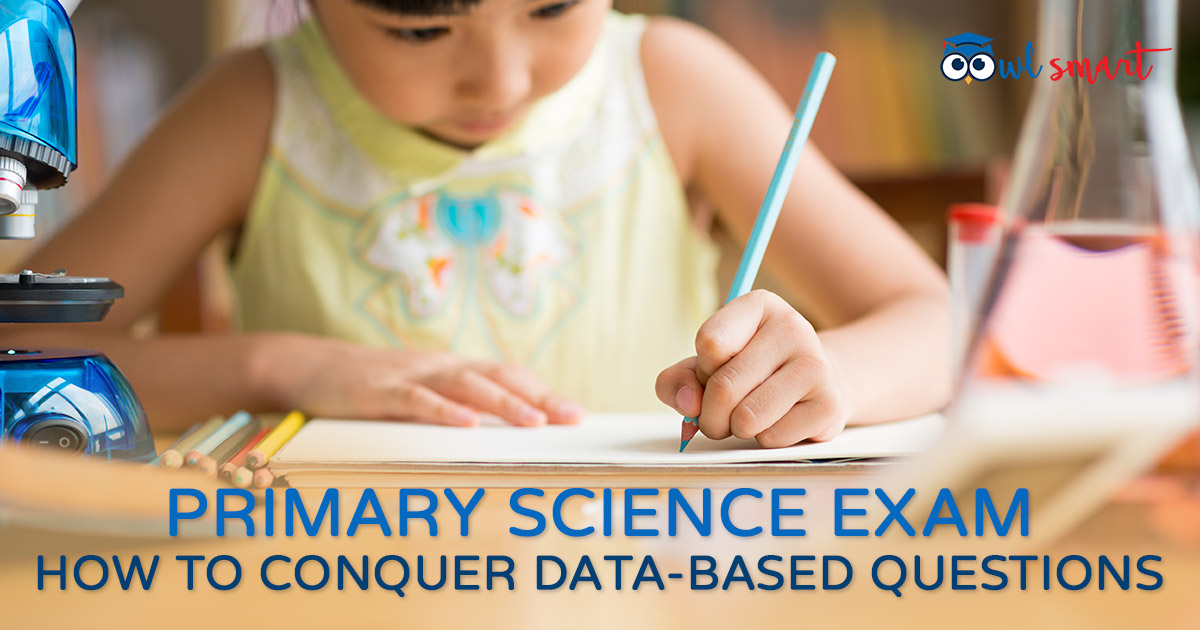
In this article, I am going to share with you an approach on how to tackle data-based question which is another common item tested in Science PSLE paper or in school-based P4 to P6 Science exam papers.
Data-based question, as the name implied, involves data or information that is given in the form of table or graph.
Other than not interpreting the data correctly, students tend to make the common mistakes of not using the data given in explaining an observation. As a result, a lot of students lose unnecessary marks in examinations.
Let’s study two examples to learn more.
Example
Eva used 2 set-ups, A and B, for her experiments. She added baking soda to the water in one of the set-ups to increase the concentration of carbon dioxide in the water. She then placed them under the sun.

The table below shows the number of bubbles produced in the 2 set-ups over 20 minutes.
| Number of bubbles produced | ||
|---|---|---|
| Time (min) | Data set X | Data set Y |
| 0 | 0 | 0 |
| 5 | 3 | 4 |
| 10 | 9 | 11 |
| 15 | 13 | 17 |
| 20 | 19 | 25 |
Which set of data, X or Y, represents the result from the set-up with baking soda added? Explain your answer. (2m)
Contextual clues given in question stem
- Baking soda was added to the water in one of the set-ups and it could increase the concentration of carbon dioxide.
- She then placed them (the set-ups) under the sun.
Concept
The mentioning of “carbon dioxide” and “sun” in the question stem give us strong clues that photosynthesis must have taken place.
The addition of soda increased the amount of carbon dioxide in water. More carbon dioxide available in the water means the rate of photosynthesis must be faster in one set-up which led to more bubbles of oxygen produced in water.
Approach in tackling data-based question
Step 1 → State your choice
Data Y
Step 2 → Use the data that helps you to make a choice
More bubbles were produced than that of Data X
Step 3 → Explain your answer conceptually
The hydrilla for Data Y had more carbon dioxide and photosynthesized at a faster rate to give out more oxygen compared to the hydrilla from Data X.
Sample Answer
Data Y. More bubbles were produced than that of Data X because the hydrilla for Data Y had more carbon dioxide and photosynthesized at a faster rate to give out more oxygen compared to the hydrilla from Data X.
Conclusion
It is important to read a question carefully and answer exactly what it is asking for. When it comes to data-based questions, analyse the data to reach a conclusion or find a relationship.

You will usually need to use the data given in helping you to explain your answer conceptually.
About the Author
Teacher Zen has over a decade of experience in teaching upper primary Math and Science in local schools. He has a post-graduate diploma in education from NIE and has a wealth of experience in marking PSLE Science and Math papers. When not teaching or working on OwlSmart, he enjoys watching soccer and supports Liverpool football team.



